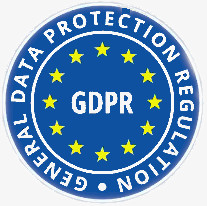
What Is a Decision Tree for Call Centers? (Hint: It’s Not a Flowchart)
Picture this: A customer calls about a billing error. Instead of your agent fumbling through 12 tabs, a decision tree guides them like a GPS:
“Verify account security.”
“Check last payment date.”
“Offer refund or credit.”
Decision trees for call centers are interactive roadmaps that break complex processes into yes/no or if/then steps. Unlike static call scripts, they adapt in real time—think of them as Choose Your Own Adventure for customer service.
Decision Trees vs. Call Scripts: The Showdown
Call Scripts: The “Teleprompter” Approach
Pros:Ensures compliance (e.g., legal disclaimers).Good for rigid processes like password resets.
Cons:Fails when customers go off-script (“But what if I paid with Bitcoin?!”).Makes agents sound robotic, hurting customer satisfaction (CSAT).
Decision Trees: The “Swiss Army Knife” Approach
Pros:Handles edge cases by branching dynamically.Reduces Average Handle Time (AHT) by 20-40%.
Cons:Requires initial setup (worth every minute).
Process Shepherd bridges the gap with dynamic scripting—a hybrid that blends script consistency with tree flexibility. Agents get guided prompts that adjust based on CRM data, like auto-loading refund policies for high-value customers.
How Call Center Decision Tree Software Works (No PhD Required)
Map Your Scenarios: Start with common issues (e.g., returns, tech support).
Build Branches: Use drag-and-drop tools to create if/then paths.
Integrate with Tools: Sync with your CRM, IVR, and knowledge base.
Go Live: Agents follow the tree during calls, chatbots use it for self-service.
Process Shepherd supercharges this with:
- AI Learning: Adjusts paths based on which options resolve tickets fastest.
Real-Time Analytics: Flags bottlenecks (e.g., 70% of agents backtrack at Step 3).
👉 Try Process Shepherd’s Decision Tree Builder Free
When to Use Decision Trees (And When to Stick to Scripts)
Decision Trees Shine When:
Issues have multiple outcomes (e.g., troubleshooting tech glitches).
Compliance is critical (e.g., healthcare disclosures).
Agents need flexibility without winging it.
Scripts Still Work For:
Simple, repetitive tasks (e.g., balance checks).
Legal requirements requiring verbatim wording.
5 Ways Decision Trees Turn Call Centers into Profit Centers
1. Slash Average Handle Time (AHT) by 30%
Agents spend 25% of calls asking redundant questions. Decision trees auto-pull customer data (e.g., order history), so agents skip the “Can I get your account number?” dance. Process Shepherd users report resolving billing issues 45% faster thanks to CRM-guided paths.
2. Stop Unnecessary Escalations (and Supervisor Burnout)
Newbies often escalate issues they could solve with a little guidance. Trees act as a safety net:
“If the customer mentions ‘fraud,’ follow security protocol → No escalation needed.” One bank reduced escalations by 60% after implementing Process Shepherd’s compliance-focused trees.
3. Turn Rookies into Experts in Days, Not Months
Traditional training takes weeks. With decision trees:
Day 1: Agents follow step-by-step prompts.
Week 2: They learn why each step matters.
Month 1: They master exceptions.
Process Shepherd’s trees even include tooltips explaining policies, cutting training time by half.
4. Make Self-Service Less… Self-Serving
75% of customers prefer solving issues alone—if it’s easy. Decision trees power:
IVR Systems: “Press 1 for returns → Enter order number → Get instant approval.”
Chatbots: Guide users through troubleshooting without agent help.
Process Shepherd integrates with tools like Zendesk to ensure bots and humans use the same logic, so customers don’t repeat themselves.
5. Protect Agents (and Your Wallet) from Costly Mistakes
A single misplaced discount can cost thousands. Decision trees enforce rules like:
“Don’t offer refunds on final-sale items.”
“Get manager approval for credits over $100.”
Process Shepherd adds an extra layer with real-time compliance checks, reducing policy violations by up to 90%.
Decision Trees + Knowledge Bases = Customer Service Magic
Decision trees tell agents what to do; knowledge bases explain how to do it. Together, they’re unstoppable:
Example: A tree prompts, “Reset the customer’s password.” Clicking the step auto-opens the knowledge base article with screenshots.
Process Shepherd takes this further by using AI to suggest relevant articles mid-call. If an agent lingers on a step, it serves up training snippets.
Ready to Build Smarter Call Center Workflows?
Decision trees aren’t just a tool—they’re a strategy. They cut costs, reduce risk, and make customers feel heard. But generic tools leave you piecing together workflows like a toddler with Legos.
Process Shepherd gives you the blueprint:
Pre-Built Templates: For industries like telecom, healthcare, and e-commerce.
Seamless Integrations: Works with Salesforce, Zoho, and legacy systems.
AI That Learns: Your trees get smarter with every call.



